How an Indigenous Clan Honored Its History on Alaska Day 2017
On October 18, the Kiks.ádi clan of the Tlingit tribe in Sitka had a decision to make.
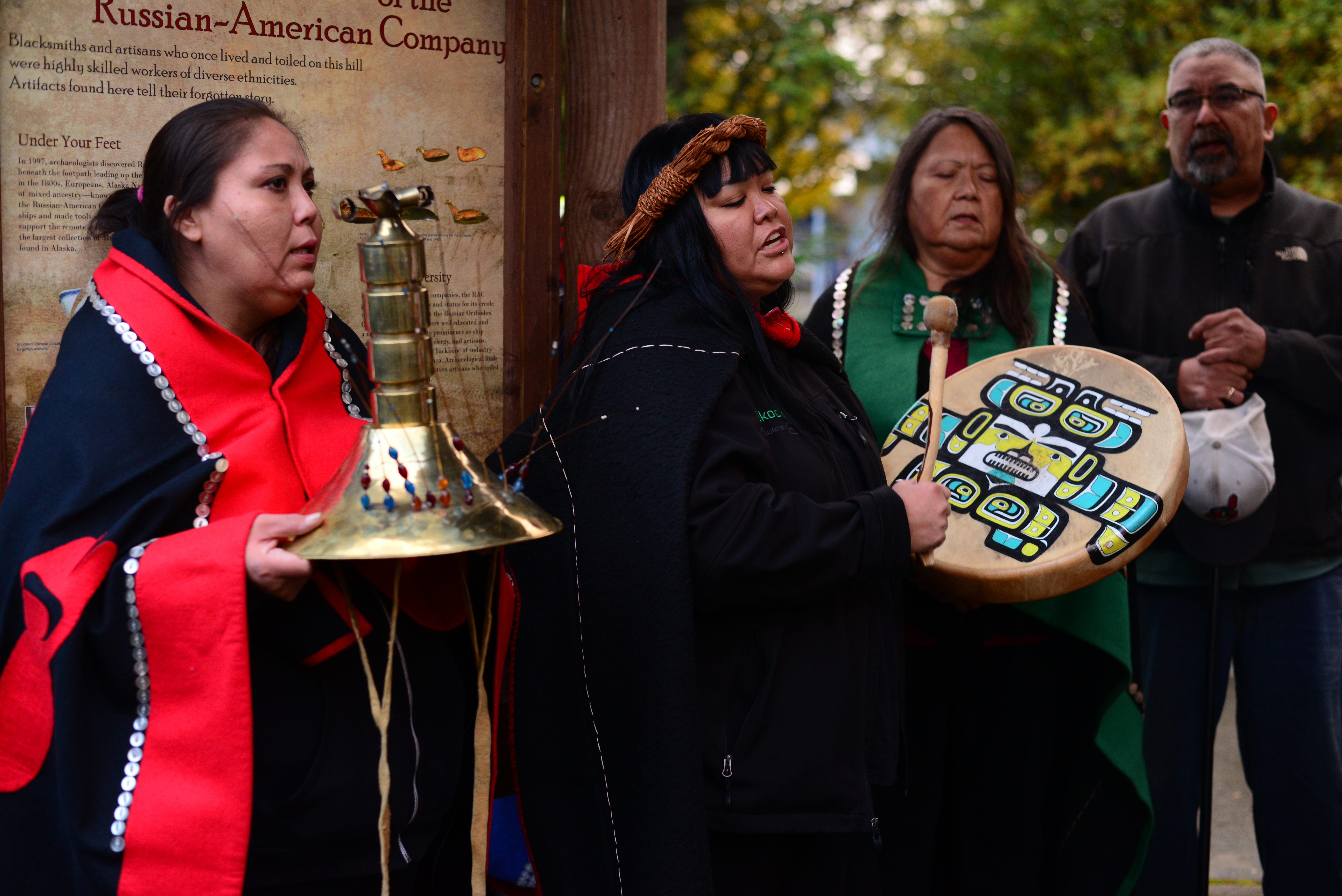
On October 18, 2017, the Kiks.ádi clan of the Tlingit tribe in Sitka, Alaska, had a decision to make: whether to show up for the 150th anniversary of Alaska’s transfer to the United States.
“I can see why those who received this vast land would want to celebrate it,” Dionne Brady-Howard, a member of the Kiks.ádi clan and a Tlingit leader, told local press in a ceremony on October 15. “But for us, it marks the loss and selling of our land.”
More than 10,000 years ago, the Tlingit tribe settled on this island, a land mass nearly the size of Delaware, veined with salmon rivers and snow-capped ridges. On a hill at the edge of the Pacific Ocean, the Kiks.ádi clan built four houses. They called the hill Noow Tlein, the “big fort.”
In 1804, a Russian army razed Noow Tlein and built a fort that became the epicenter of its Alaskan fur-trading empire. On October 18, 1867, Russia transferred Alaska to the United States at Noow Tlein, which Americans renamed Castle Hill. The price for Alaska, stretching across tribal settlements from the Bering Sea to the Arctic and down to Sitka, was $7.2 million, or roughly two cents per acre.
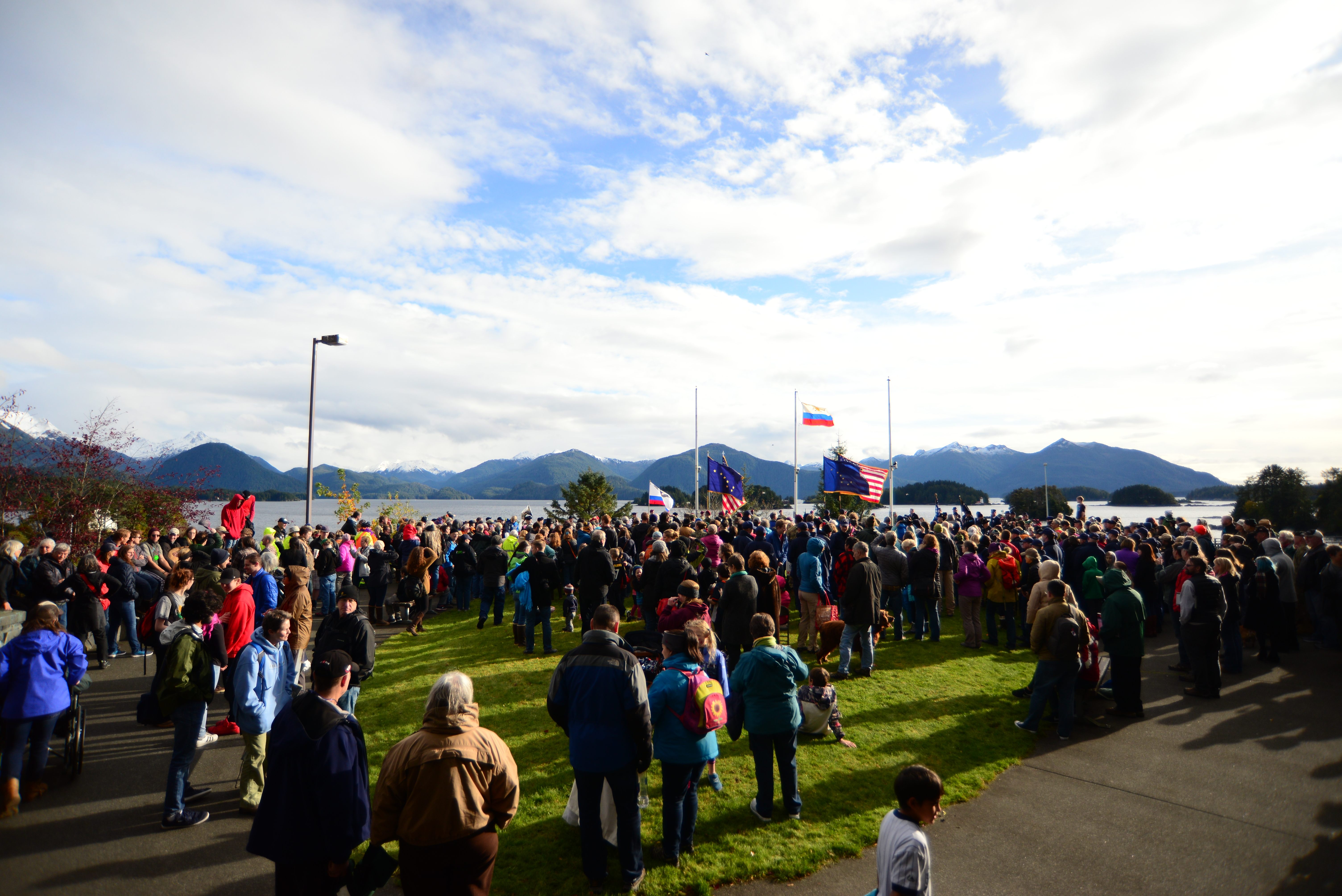
From all accounts, the ceremony 150 years ago was awkward. None of the soldiers could wrest the Russian flag from the pole. It eventually escaped and billowed into the soldier’s bayonets. The Russian Princess Maksoutoff wept. Soldiers hurriedly hoisted the American flag and said a few words. No Tlingit representatives were invited to the ceremony, but they paddled to the base of Noow Tlein for a view.
“I heard stories from elders that we were in canoes at the bottom, watching the Russian and American flags go up and down, wondering what was going on,” Louise Brady, Dionne’s mother says.
Now, every year on Alaska Day, October 18, Alaskans in Russian bonnets, hoop skirts, and 19th-century military garb re-enact the transfer ceremony on Noow Tlein. In a town where a quarter of the population is Alaska Native, Brady says no one from the local Tlingit tribe had ever been officially invited to the ceremony until this year.
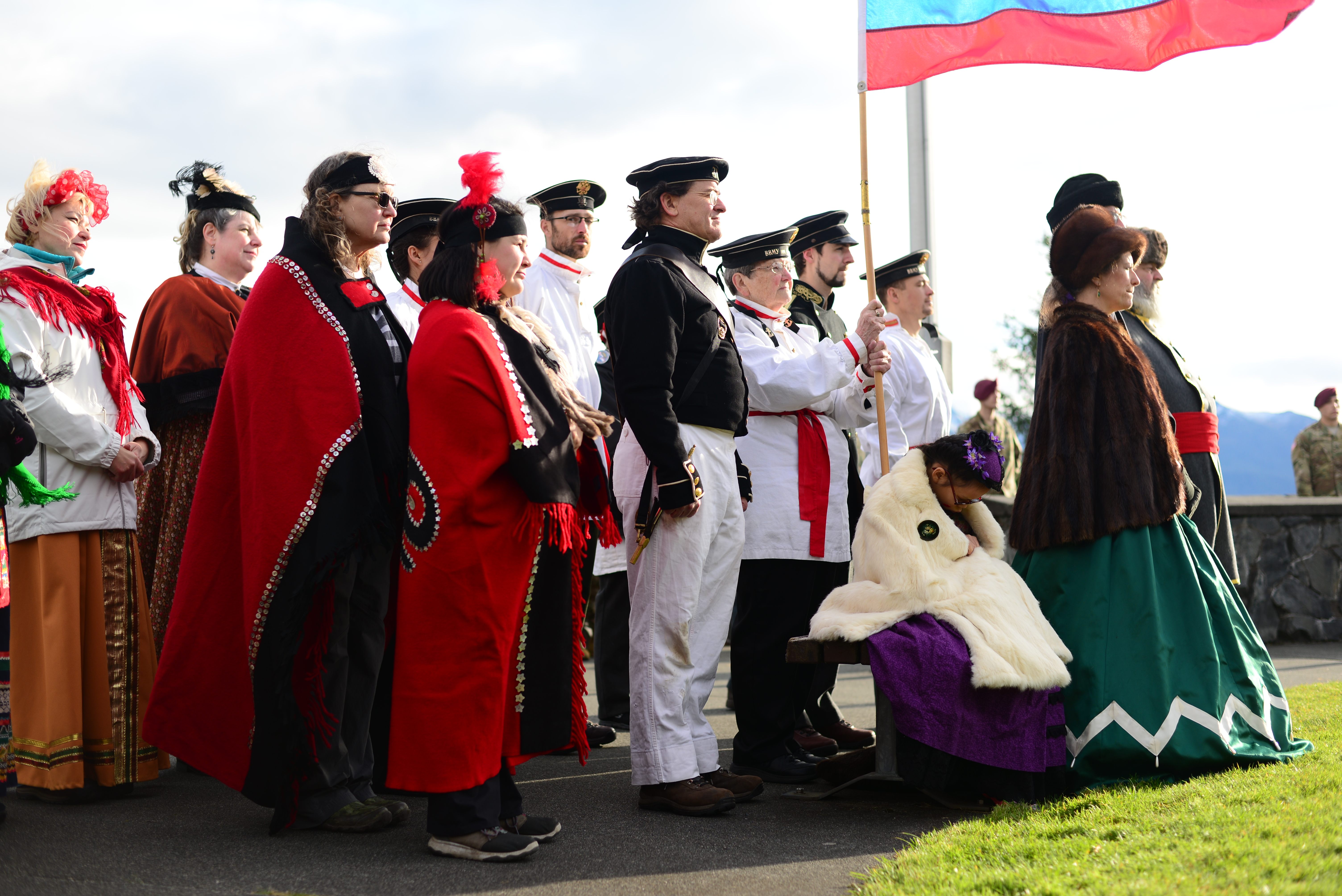
Elaine Strelow, who has volunteered on the Alaska Day Festival committee since 1966, says that beyond organizing participants of the reenactment, the committee rarely offers specific invitations.
“We announce it’s going to happen and everyone is welcome,” she says, noting that October 18 is a celebration more of Sitka than of the transfer. “It’s a recognition of the significance of this place—not just the ceremony but the centuries before that. It’s a time to celebrate who we are here: a diverse bunch of people of various cultures.”
But “celebrating diversity” is open to interpretation.
In 2016, one Tlingit woman showed up in traditional regalia, a full-length felt button robe, decorated with her clan emblem on the back. People might have ignored her, had it not been for a cardboard sign she brought thanking her ancestors in Tlingit and English: “Gunalchéesh Sheet’ka Kwaan for your care of Tlingit Aani for time immemorial.”
Another ceremony organizer asked her to leave.

This year the Bradys, prominent members of the Kiks.ádi clan, got a few invites from ceremony participants to attend the events on top of the hill, in what some townspeople saw as an effort to include Tlingit perspective, albeit 150 years late.
But the clan felt uncertain. On the morning of October 18, members were still debating whether to attend the ceremony, or to hold a separate one.
“It was a nice invitation,” Louise Brady said. “But if we go are we being complicit? Are we saying that we’re now okay with the transfer?”
Some of the clan wanted to show up on their own terms, wearing black armbands and singing mourning songs. Others worried that such an approach would be considered too radical. Protests in the lower 48 over symbols of white supremacy may have bolstered similar conversations on the Final Frontier, but the accompanying violence has also had a chilling effect.
“It is a really delicate situation, especially given the current climate of racism in this country,” Brady says. “I mean in my mind, I’m going, ‘Is it going to be safe?’”
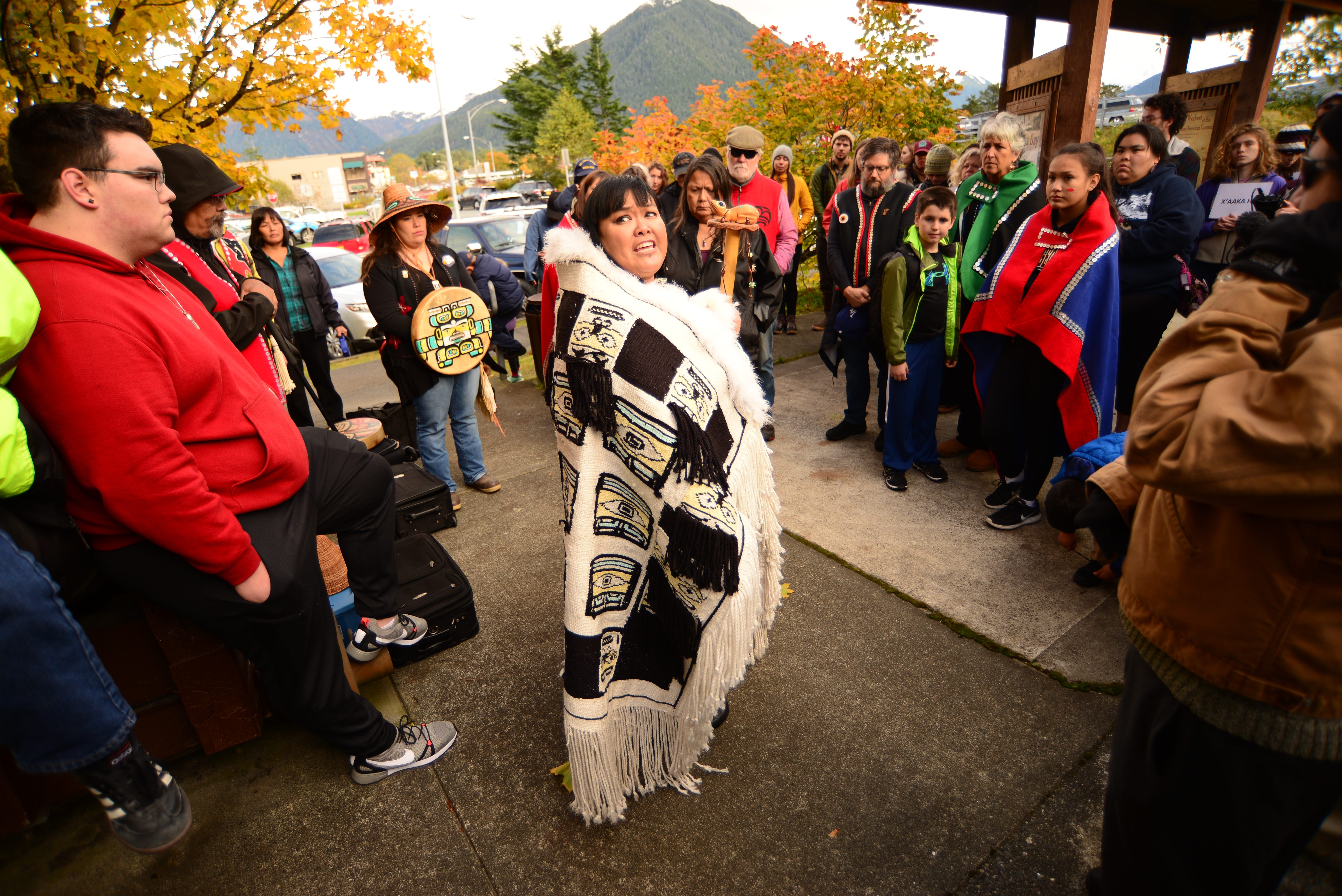
Brady isn’t sure what convinced the clan to go. But at around 1:30 p.m., members drove to the base of the hill, brought out their elaborately painted hand drums, and pulled on ceremonial button robes.
“The robes represent our ancestors,” Brady says. “Women fought right alongside the men in the 1804 battle. And so our grandmothers and our great-great-great grandmothers were invited to come and join us. That’s the at.óowu—sacred object—and that’s the robes, a representation of who were we are, throughout the generations, including the children yet to come.”
A group of about 60 supporters joined Tlingit leaders at the ceremony. Some held signs with the same phrase that appeared on the cardboard sign in 2016.
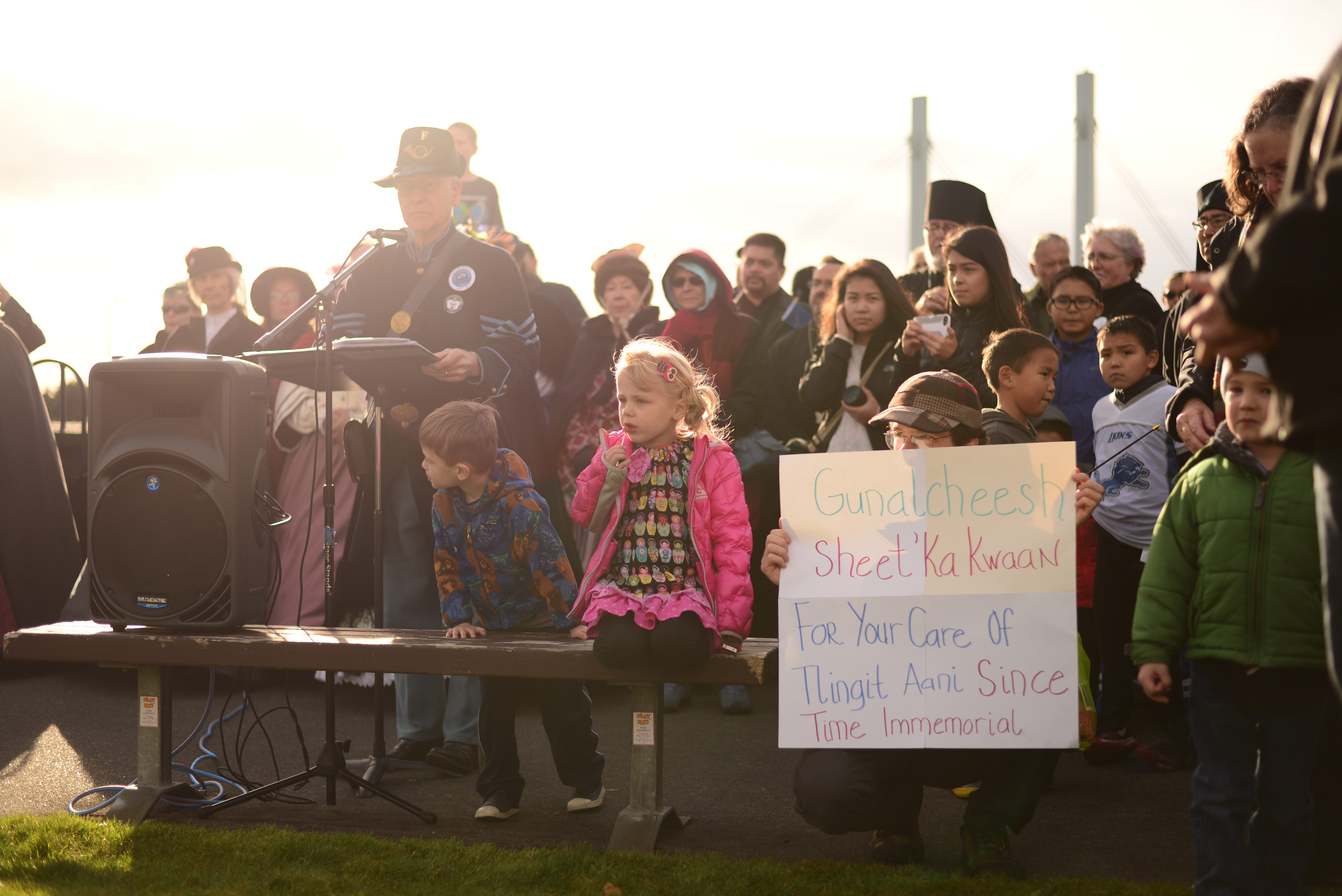
As the Russian flag inched down the pole in the re-enactment ceremony at the hill’s summit, singers launched into a Tlingit mourning song below.
Some of the re-enactors above faltered for a moment and peered down to find the source of the dirge, but the ceremony continued.
The American flag went up, and soldiers started firing westward towards the Pacific.
Brady said the gunfire shook her to the core.
“All of a sudden we hear the guns and the cannons going off and it was like, so this is what our ancestors must have felt like.”
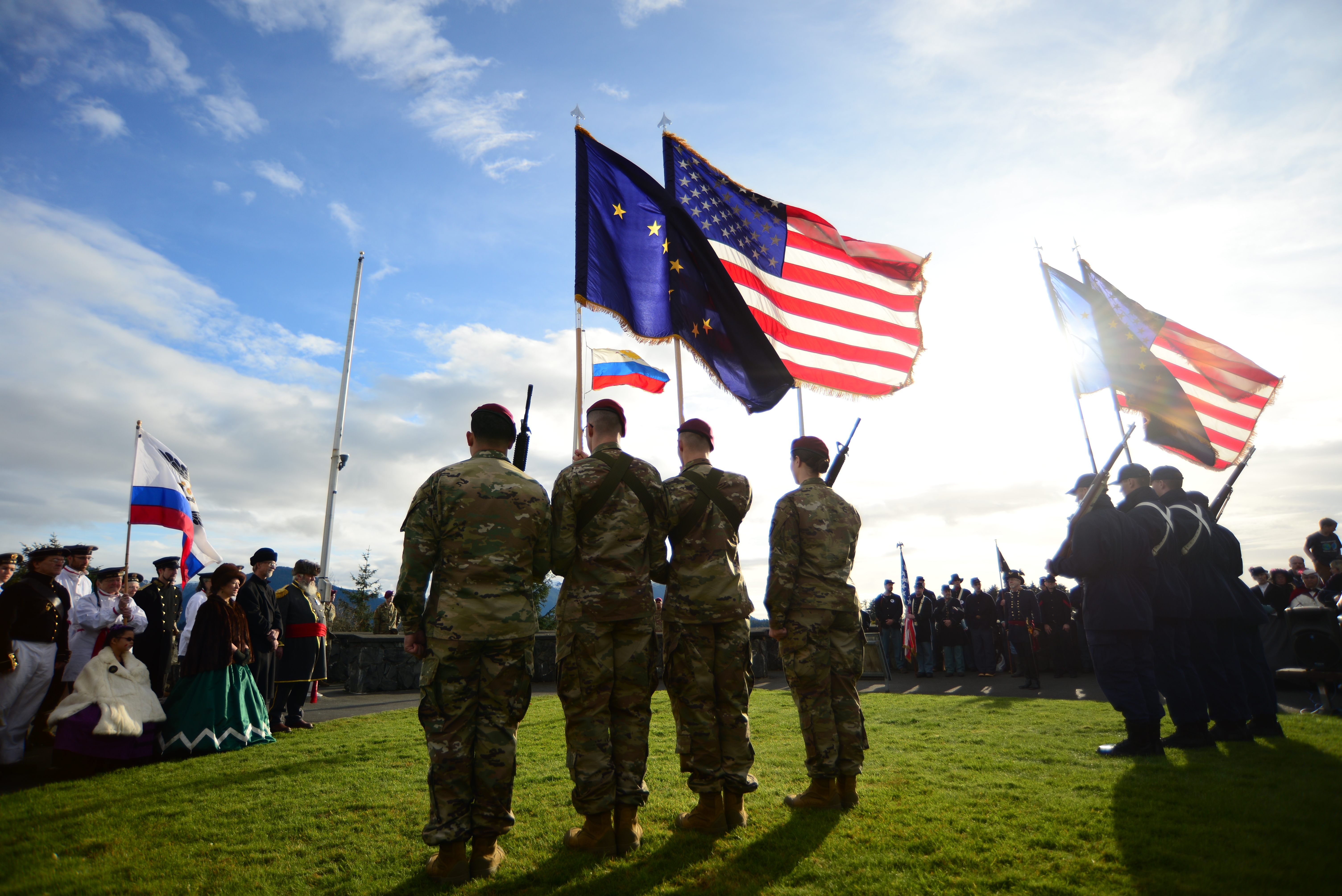
Members of the tribe said these songs were the first time that Tlingit voices were heard on October 18, in the original transfer or celebrations since.
“It’s as though they are saying in this song to the Noow Tlein: we are still here,” Gerry Hope, a Tlingit leader from another clan, said in the silence after the music ended. “We are still here. We are still here. We are still here.”
Strelow, the Alaska Day organizer, said the clan was entitled to its own concurrent ceremony. “I recognize there are people who have other feelings that I have not heard as fully as I could have.”
When I asked her if the transfer ceremony would ever officially incorporate Tlingit leaders, she said probably, one day. But it would be an incremental step to shift a process that began with the razing of Noow Tlein more than 200 years ago.
Louise Brady says the Kiks.ádi ceremonies at the base of Noow Tlein marked a shift that “felt incredibly healing.” When I asked her what she hoped for next, she laughed and closed her eyes for a few seconds: “It’d be nice to have the clan houses up there again.”



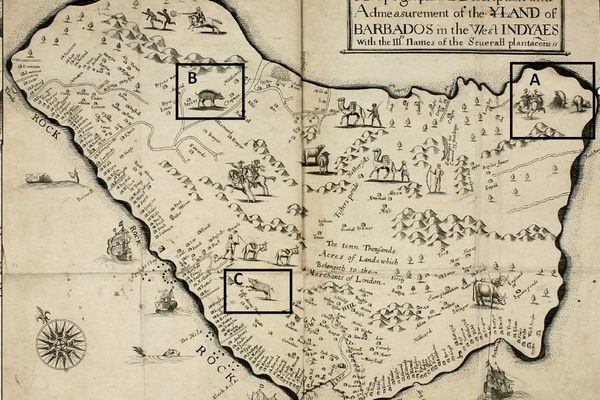



Follow us on Twitter to get the latest on the world's hidden wonders.
Like us on Facebook to get the latest on the world's hidden wonders.
Follow us on Twitter Like us on Facebook